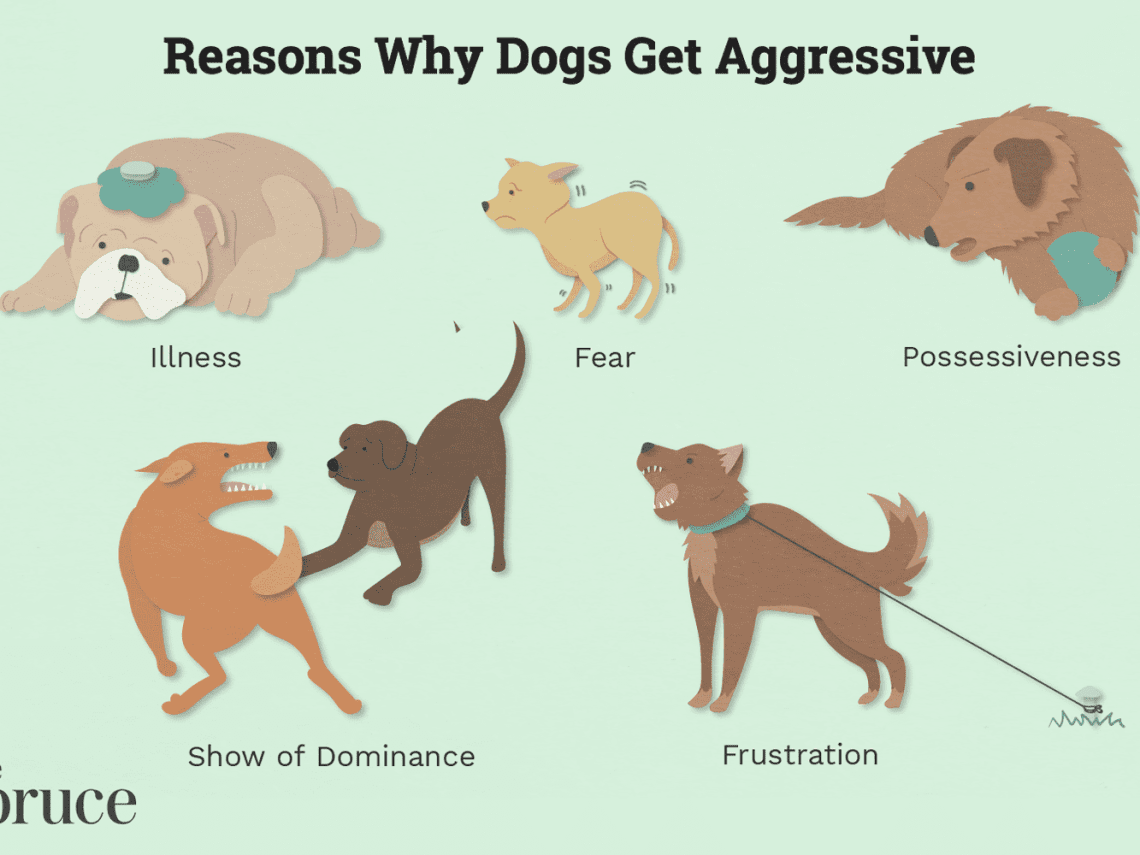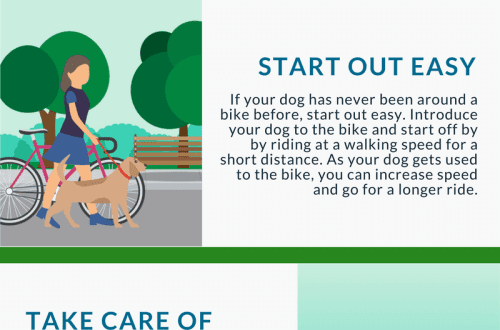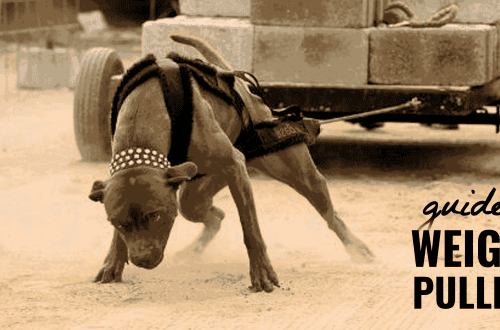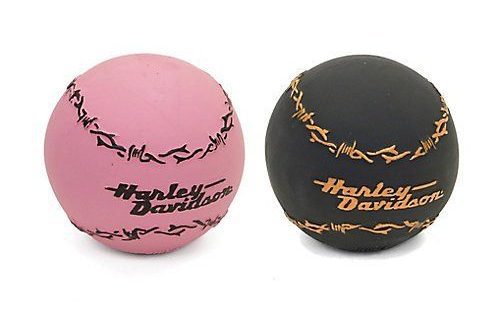
Why can a dog become aggressive?
It is believed that the domestic term “aggression” comes from the Latin word aggredi, which means to attack, and from the French aggressif, which characterizes the subject as attacking and warlike.
So, under the aggressive, i.e. attacking or militant behavior means a specific combination of demonstrative (demonstrative aggression) and physical actions (physical aggression) aimed at representatives of one’s own (intraspecific aggression) or another (interspecific aggression) animal species, less often at inanimate objects (redirected or displaced aggression).
What is aggression?
Demonstrative aggression is non-contact aggression – a kind of intimidating and warning behavior. In fact, if you scare the opponent, he can get cold feet and retreat, then you won’t have to fight.
A self-confident dog usually shows demonstrative aggression in the following ways: the tail is tense (it is raised, the hair on it is tousled), but may tremble or sway; the nape (sometimes the sacrum) is bristled; ears are raised and directed forward, vertical wrinkles may appear on the forehead, the nose is wrinkled, the mouth is ajar and bared so that teeth and gums are visible, the paws are straightened and tense, the look is straight and cold.
The demonstrative aggression of an insecure dog is not so much a frightening as a warning behavior: if the dog is standing, then it crouches a little, the paws are half-bent, the tail is tucked up, but can sway; the nape is bristling, the ears are laid back, the pupils are dilated; The mouth is bared, but not wide open so that the teeth can be seen, the corner of the mouth is pointing back and down.
When displaying aggression, dogs will often growl or growl with a bark, and may also lunge towards the opponent and then immediately retreat back.
If it is not possible to solve the problem with the help of demonstrative aggression, the dogs move from “words to deeds”, i.e., to physical aggression.
Often physical aggression begins with a push with the shoulder, an attempt to put the front paws on the withers of the opponent or to put the muzzle on him. If the opponent does not take a pose of submission and does not stop resistance, a mouth armed with teeth is used.
However, dogs are well aware that teeth are “cold piercing weapons”, and use them following certain rules. To begin with, they can simply strike with their teeth, and then – progressively – grab, squeeze and release, bite, seriously bite, bite and jerk, grab and shake from side to side.
Often a “terrible” dog fight does without injury at all.
Why is the dog showing aggression?
And why is this seemingly indecent behavior in a decent society needed? I will reveal a terrible secret: each of us is alive only because each of our ancestors could be aggressive when it was necessary. The fact is that aggression is a way to satisfy some need that is currently of increased importance for the animal in the presence of an obstacle – usually in the form of a rival, competitor or enemy.
Imagine yourself as a dog and imagine that you are walking, all so thoroughbred and beautiful, but nevertheless hungry like a wolf, along the path. And suddenly you see: there is a meat corn of extreme appetizing and attractiveness, and this corn can save you from starvation. And you are heading towards this mosl at a dancing trot in order to carry out a peaceful food-producing and disturbing behavior. But then something dirty and in tangles falls out of the bushes and makes its claims to the possession of almost your moss. And you perfectly understand that if you give up the bone with meat, you will die and your grandchildren will not walk on the earth.
But it is dangerous to immediately rush into a fight, especially since this “something in tangles” looks big and ferocious. In a fight, you can get injured, and sometimes serious and not always compatible with life. Therefore, to begin with, you turn on the mechanism of demonstrative aggression in the fight for your mosol. If your opponent gets frightened and retreats, then this will all end: you will remain whole, unharmed and fed, and generally remain on the ground. And if the opponent is not one of the fearful ten and begins to threaten himself, then you will either have to give in, or turn on the mechanism of physical aggression.
Suppose when you rushed at the one with the mats and bit him in the paw, he turned around and ran away. You are the winner! Now you will not starve to death and your brave genes will be proudly worn by your grandchildren! This is an example of food aggression.
Most types of aggressive behavior are more like a tournament fight with blunt spears. This is ritualized or imaginary aggression. Its goal is not to kill the opponent, the goal is to suppress his claims and get him out of the way.
But there are two types of aggressive behavior, in which the goal is to inflict damage, as they say, “not compatible with life.” This is hunting aggression, it is also called true or predatory aggression, which is noted when an animal that is food is killed. And also in a critical situation of defensive behavior, when you are about to be killed, taking, for example, for that same food animal.
Why does a dog become aggressive?
Aggressive behavior is, of course, genetically determined. That is, the more genes that are irresponsibly related to aggression, the more aggressive the animal. And it really is. As you know, there are breeds of dogs, among which the number of aggressively behaving individuals is greater than among individuals of other breeds. Such breeds were specially bred for this. However, there may be animals with increased aggressiveness and not specially bred, but as a result of some kind of closely related breeding. And, of course, among all there are all sorts. The tendency to aggression and its severity is extremely individual, and asocial muzzles can be found among dogs of any breed.
However, the likelihood of aggressive behavior is determined by the upbringing and conditions of interaction of family members with the dog. Of great importance is the threshold of aggressive behavior, that is, the time, that set of information, signals, stimuli and stimuli that tell the dog that the time has come to turn on the mechanism of physical aggression. And he is quite objective, and therefore the world is not as aggressive as it could theoretically be.
On the other hand, this threshold also depends on the subjective significance (importance) for the animal of the need that is prevented from being satisfied. And so there are dogs that “turn on” where other dogs behave calmly or are limited to demonstrative aggression. For example, some dogs may overestimate the danger that threatens them and quickly turn on defensive aggression, or overestimate the likelihood of starvation and immediately begin to defend a bowl of food from the owner who just put it in.
They also distinguish conditioned aggression, formed according to the mechanism of the classical conditioned reflex. Previously, such aggression was launched by the “Fas!” command. At home, it is often formed according to this scenario. The owner catches the puppy for unseemly behavior and after the phrase “Now I will punish!” slaps him painfully. A year later, having gained strength, the young dog, in response to this phrase, no longer responds with signals of humility and reconciliation, but with demonstrative aggressive behavior, or even attacks the owner.
And in general, if you spank your dog a lot, he starts to think that this is a normal form of communication in your family, and starts to spank you. And she can only spank with fangs. Learn it.
And further. The dog is more likely to show aggression towards a person whom he does not consider to have the right to control his behavior, limit it or correct it. Previously, in order to exclude the aggressive behavior of the dog towards itself, the owner was recommended to become a “dominant” subject in relation to the dog. Now it is recommended to become a “respected” dog family member or “loyal partner”.
Often a dog starts to behave aggressively when it is forced to do something that it does not want to do at the moment, or when it is prevented from doing something that it really wants to do. When they hurt her, when they take away what is important to her, or she decides that they can encroach on it, and begins to protect it. But, probably, it’s impossible to list all the cases, because it’s not for nothing that the great Tolstoy used to say that all unhappy families are unhappy in their own way.
Photo:





